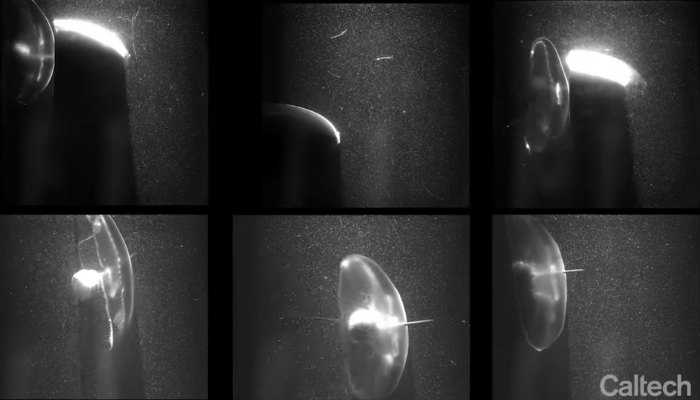Biohybrid Jellyfish to Push Boundaries of Deep-Sea Exploration

Exploring the mysteries of the ocean depths has long been an irresistible challenge for scientists. Like the vastness of space, the ocean remains largely uncharted territory, with its depths holding valuable information that could provide important insights into our planet’s climate and ecosystems. In a unique effort to unlock this information, researchers at Caltech have turned to the fusion of 3D printing technology with an unlikely ally: the jellyfish. By designing 3D printed enhancements for jellyfish, researchers aim to better navigate the ocean to collect valuable data on one of Earth’s largest ecosystems.
Inspired by the graceful movements and immense adaptability of jellyfish, Dr. John Dabiri, Centennial Professor of Aeronautics and Mechanical Engineering at Caltech, and his team are pioneering the development of biohybrid jellyfish. These jellyfish, which have been fastened with 3D printed enhancements and sensors, can be thought of as “cyborg” counterparts.

Biohybrid jellyfish with fitted forebodies and sensors (Photo Credits: Caltech)
This innovation relies heavily on 3D printing to fabricate custom-designed forebodies attached to the top of the jellyfish’s bell to improve buoyancy and reduce drag. Dr. Dabiri’s team also equipped the jellyfish with specialized electronic pacemakers, enabling precise control of their swimming speed. These experiments revealed that by encouraging jellyfish to swim at speeds beyond their natural leisurely pace, they become even more proficient. The jellyfish could surpass their typical speed by more than four times despite using only twice as much energy, even while carrying a payload.
A New Era of Ocean Exploration
To put their creations to the test, the research team has constructed a state-of-the-art vertical aquarium at Caltech. With a height of more than three stories, this structure serves as a controlled environment for studying the cyborg jellyfish. It will act as a first-of-its-kind “water treadmill” to test the creatures against flowing vertical currents. With their 3D printed enhancements, these biohybrid jellyfish have showcased significantly improved speed and agility when compared to their natural counterparts, effortlessly navigating the depths and pressures of the tank with efficiency.
Beyond their inherent resilience and deep-sea adaptability, jellyfish also present a significant advantage in terms of cost-effectiveness, especially when compared to expensive ocean exploration instruments. At only $20 per fish, these biohybrid jellyfish offer a compelling alternative to traditional methods, as research vessels can cost upwards of $50,000 per day.
Currently, further development of instrument and enhancement packs is needed to deploy these jellyfish explorers at even greater ocean depths. However, the research team at Caltech is confident that this project will succeed in unlocking critical ocean data. “Jellyfish are the original ocean explorers, reaching its deepest corners and thriving just as well in tropical or polar waters. Since they don’t have a brain or the ability to sense pain, we’ve been able to collaborate with bioethicists to develop this biohybrid robotic application in a way that’s ethically principled.” Dabiri stated. “I’m really excited to see what we can learn by simply observing these parts of the ocean for the very first time.”
While current biohybrid jellies excel at enhanced straight-line swimming for deep-sea measurements, Dr. Dabiri envisions future advancements. Research is ongoing to equip them with steering capabilities, enabling not only vertical but also horizontal navigation. Notably, these advancements have sparked debate on whether this technology is applicable in extraterrestrial exploration, particularly to explore the oceans of distant moons. You can learn more about this project by clicking here.
What do you think of these biohybrid jellyfish? Let us know in a comment below or on our LinkedIn, Facebook, and Twitter pages! Don’t forget to sign up for our free weekly newsletter here, the latest 3D printing news straight to your inbox! You can also find all our videos on our YouTube channel.







